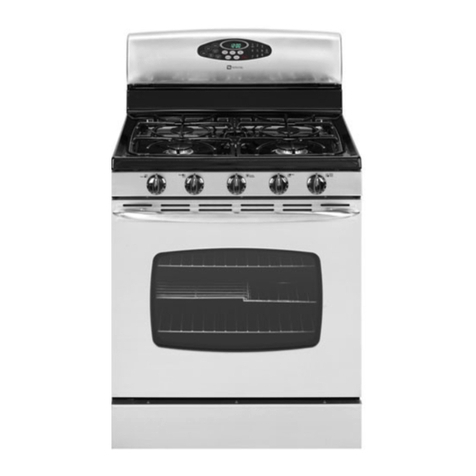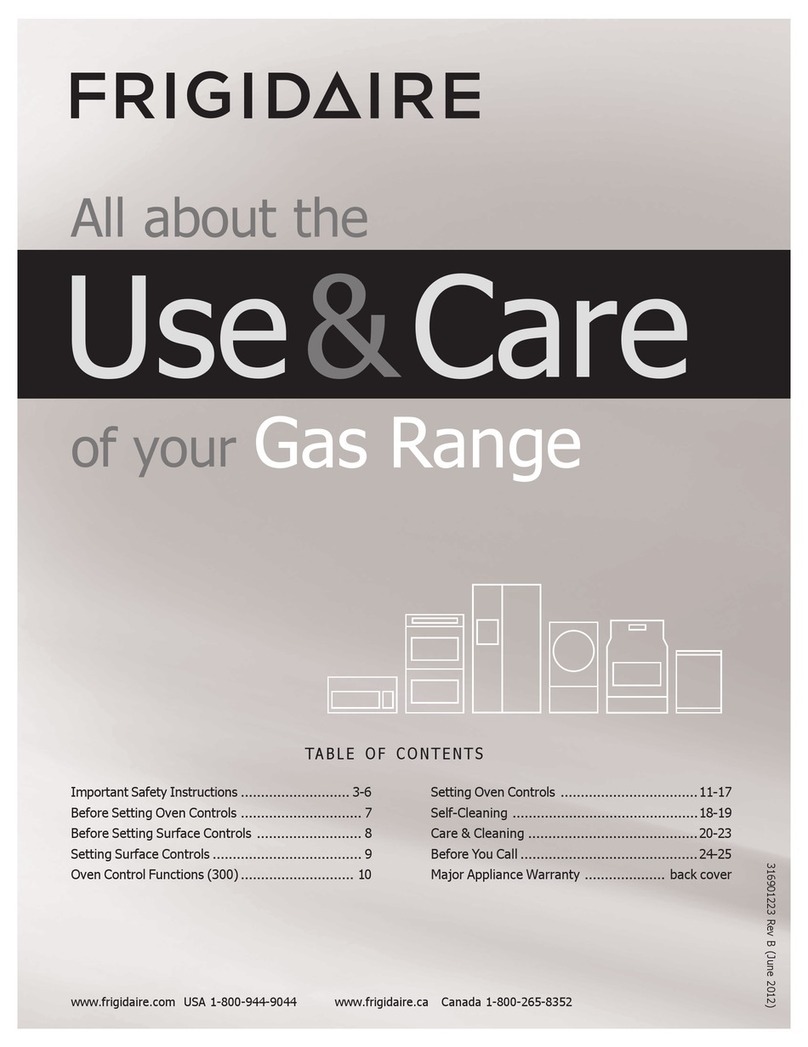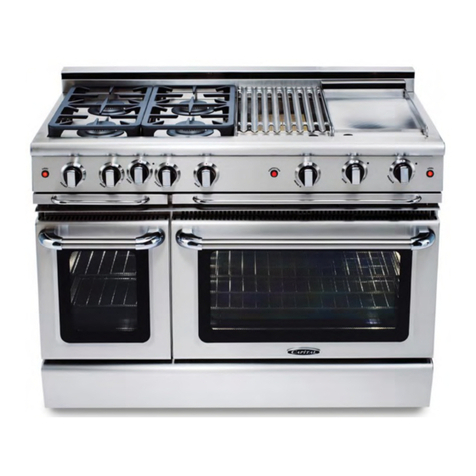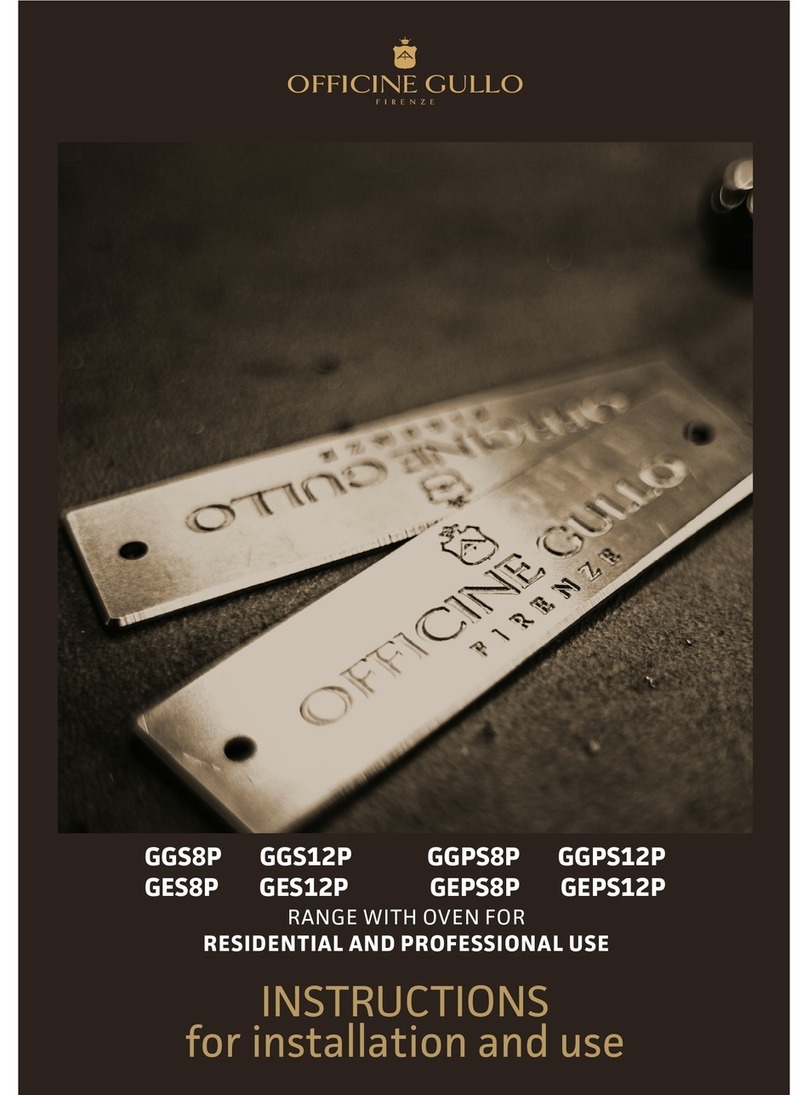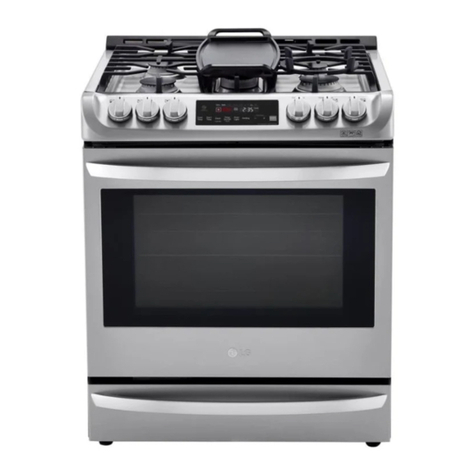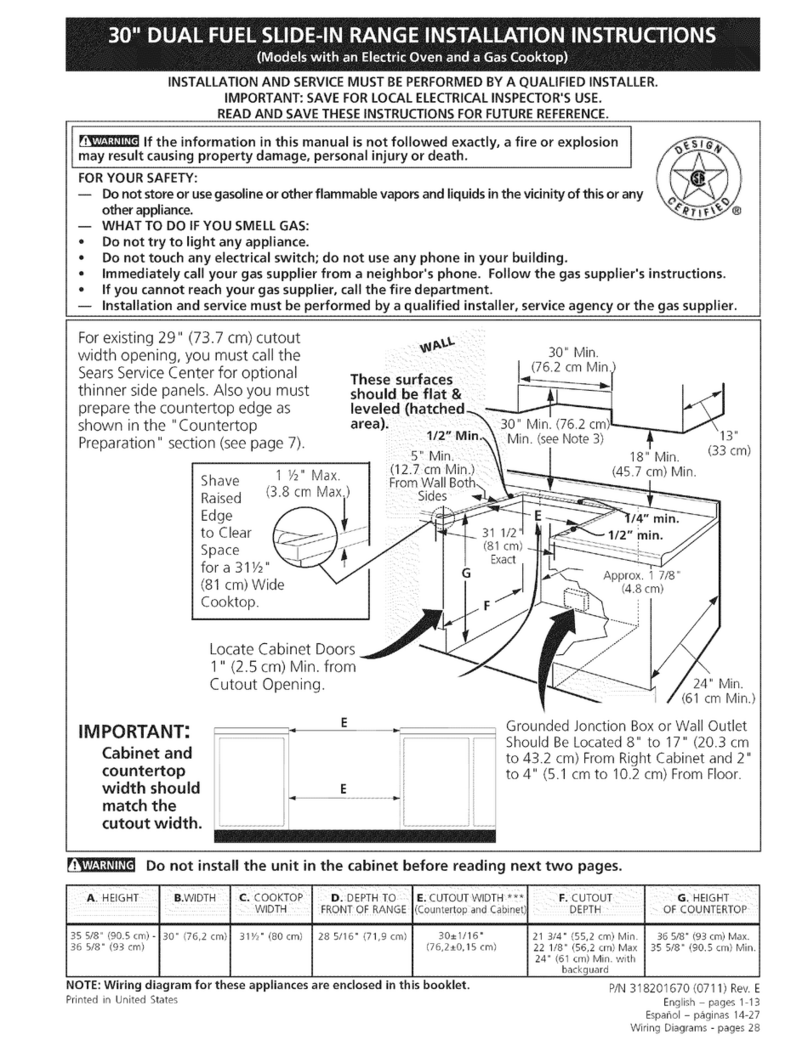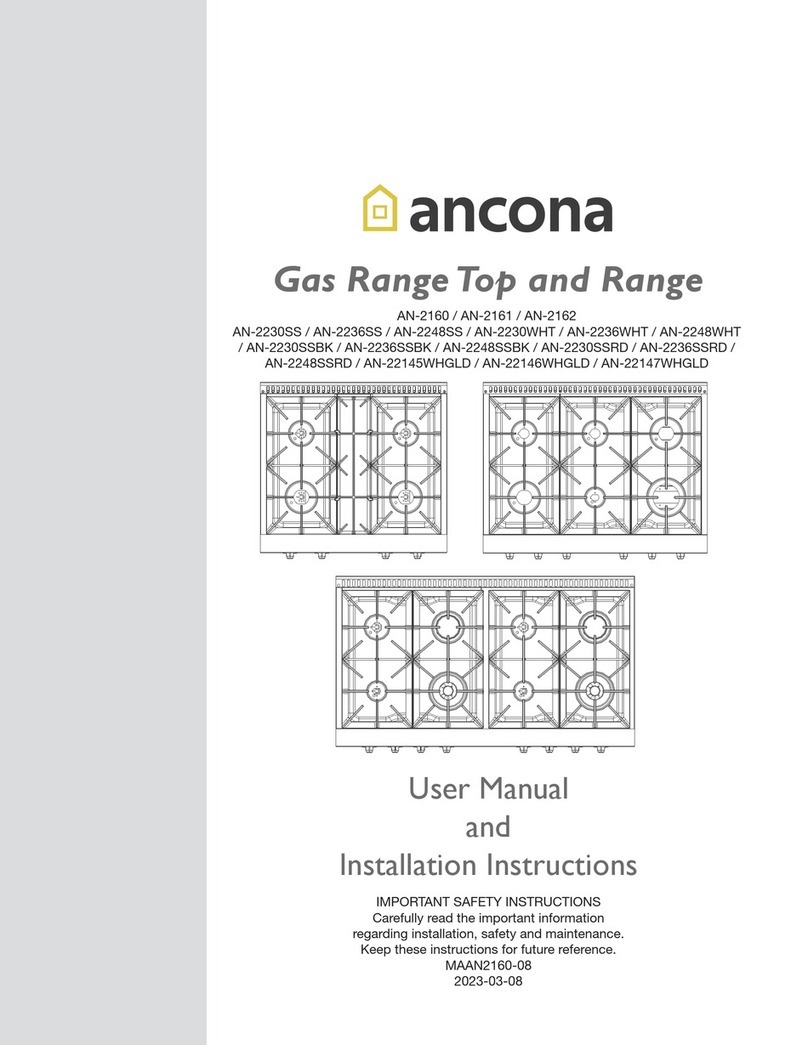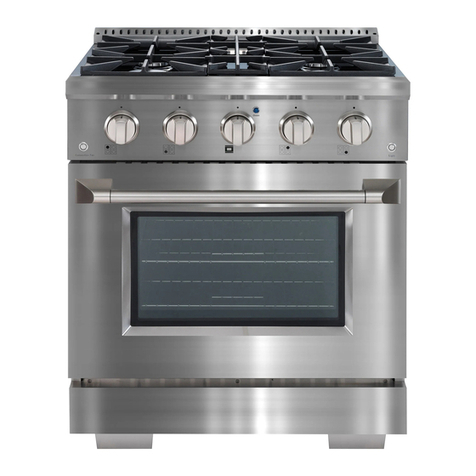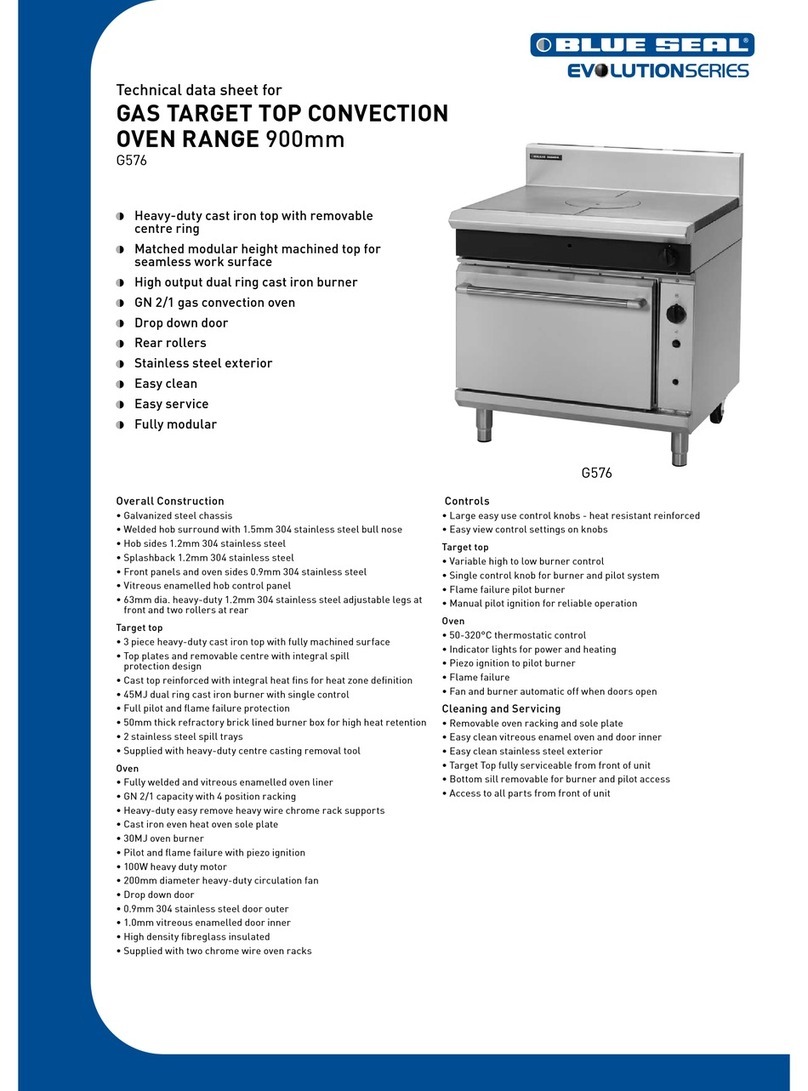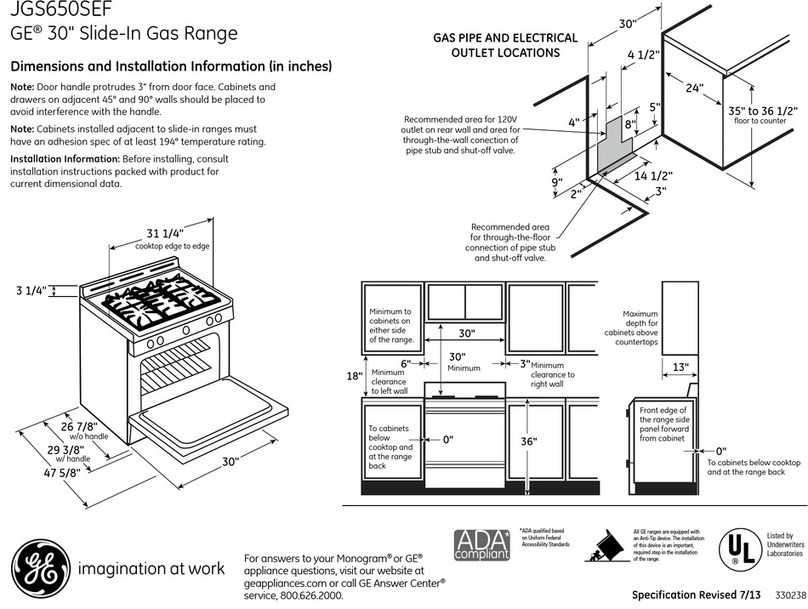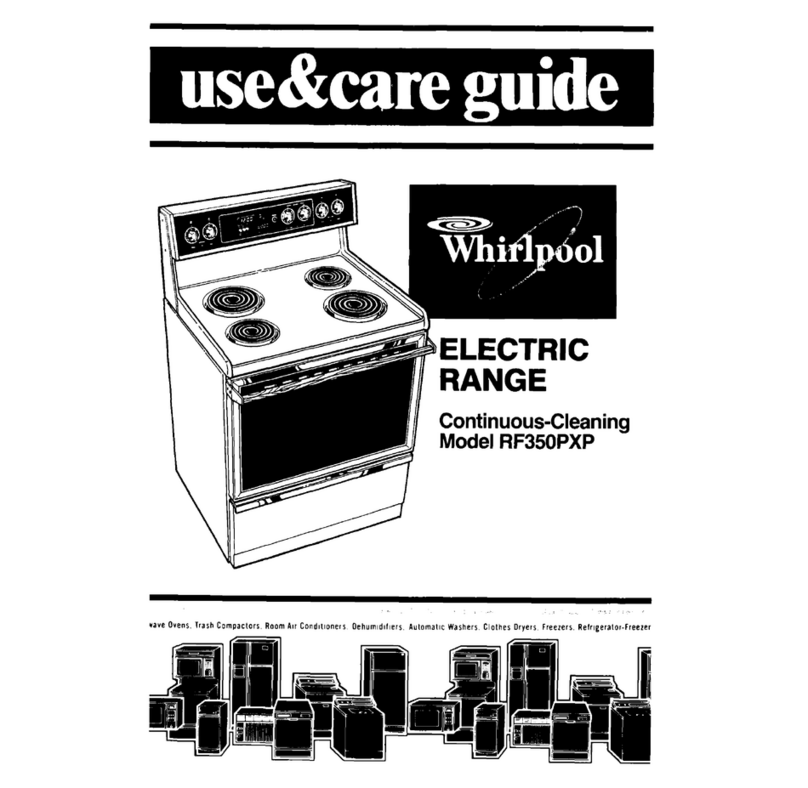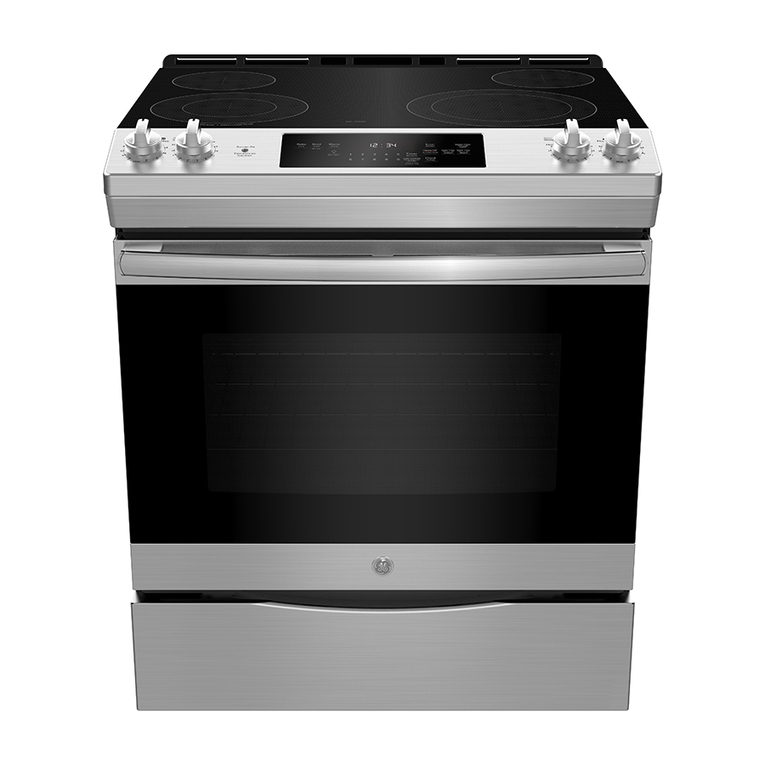
— 6 —
Important Safety Information
DANGER
• Donotstoreitemsofinteresttochildreninthecabinets
above the appliance or on the back splash of appliance.
Children should not be left alone or unattended in the
area where appliance is in use. Do not allow children to
climb or play around the appliance. They should never
be allowed to sit or stand on any part of the appliance.
Children climbing on the appliance to reach items could
be seriously injured.
• DONOTTOUCHTHECOOKINGSURFACE,THE
BURNERS, GRATES, OR ANY AREAS NEAR THEM.
Surface burners or appliance may be hot even though
ames are not visible. Areas near surface burners or
appliance may become hot enough to cause burns.
During and after use, do not touch, or let clothing or
other ammable materials touch these areas until they
have had sufcient time to cool.
• Donotwearloose-ttingorhanginggarmentswhile
using the appliance. Do not let clothing or other
ammable materials contact hot surfaces.
• Smothergreasereswithapanlid,orusebakingsoda,
a dry chemical or foam-type extinguisher.
• UseanextinguisherONLYif:
- You know you have a Class A, B or C extinguisher, and
you already know how to operate it.
- The re is small and contained in the area where it
is started.
- The re department is being/has been called.
- You can ght the re with your back to an exit.
• Whenheatingfatorgrease,watchitclosely.Fator
grease may catch re if allowed to become too hot.
• Useonlydrypotholders.Moistordamppotholderson
hot surfaces may result in burns from steam. Do not
let potholders touch hot heating elements, the ame or
burners. Do not use a towel or other bulky cloth instead
of a potholder.
• Donotheatunopenedfoodcontainers.Buildupof
pressure may cause the container to burst and result
in injury.
• Stepping,leaningorsittingonthisappliancecanresultin
serious injuries and also cause damage to the appliance.
• Never use this appliance as a space heater to heat
or warm the room. Doing so may result in carbon
monoxide poisoning and overheating.
• Knowwhichknobcontrolswhichsurfaceburner.Visually
check that the burner has lit. Then adjust the ame so it
does not extend beyond the edge of the pot/pan.
• Cleantheapplianceregularlytokeepallpartsfreeof
grease that could catch re. Exhaust fan ventilation
hoods and grease lters should be kept clean. Do not
allow grease to accumulate on hood or lter. Greasy
deposits in the fan could catch re. When cooking food,
turnthehoodfanon.Refertohoodmanufacturer’s
instructions for cleaning.
•
Pot/pan handles should be turned inward and not
extend over adjacent surface burners. To reduce the
risk of burns, ignition of ammable materials, and
spillage due to unintentional contact with the pot/pan,
the handle of the utensil should be positioned so that
it is turned inward, and does not extend over adjacent
surface burners.
• Neverleavesurfaceburnersunattendedathighheat
settings. Boilovers cause smoke and greasy spillovers
that may ignite, or a pan that has boiled dry may melt.
• Donotusealuminumfoiltolineanypartofthe
appliance. Use aluminum foil only to cover food during
cooking. Improper installation of these liners may result
in risk of electric shock or re.
• Onlycertaintypesofglass,glass/ceramic,ceramic,
earthenware, or other glazed utensils are suitable for
appliance service without breaking due to the sudden
changeintemperature.Checkthemanufacturer’s
recommendations for appliance use.
• Donotusedecorativesurfaceburnercovers.Ifa
burner is accidentally turned on, the decorative cover
will become hot and possibly melt. You will not be able
to see that the burner is on. Burns will occur if the hot
covers are touched. Damage may also be done to the
appliance or burners because the covers may cause
overheating. Air will be blocked from the burner and
cause combustion problems.
• Alwaysuseproperamesize.Adjustamesizesoit
does not extend beyond the edge of the pot/pan. The
use of undersized pots/pans will expose a portion of the
burner ame to direct contact and may result in ignition
of clothing. Proper relationship of pot/pan to ame will
also improve efciency.
• Topburneramesizeshouldbeadjustedsoitdoesnot
extend beyond the edge of the cooking utensil.
CALIFORNIA PROPOSITION 65 WARNING:
This product contains a chemical known to the state
of California to cause cancer, or birth defects or other
reproductive harm.
